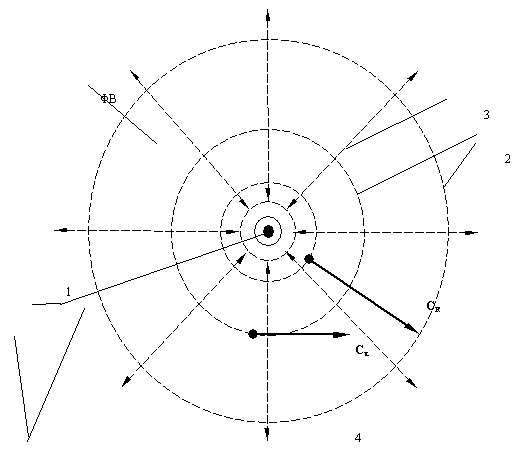3.4.3. Inertial frame
V. I. Melnikov
The main property of any IF is the absence of external forces acting on the physical bodies associated with this frame when it is at rest or moves uniformly in a straight line. Let us consider one of the states of the PB–PV system to demonstrate the manifestation of this property.
When the PB–PV system is at rest with respect to the system of “motionless stars” (MS), the symmetric IL formed during the WOB process acts back on the physical body. This influence is symmetric in space, the resultant force is zero, and the body remains at rest.
When the physical body moves uniformly in a straight line with respect to the MS frame, a joint IL (and the corresponding reduced frame) is formed as a result of the superposition of the WOB and Wij regions. Since the interaction intensity is proportional to the level difference (according to our model) and since UOB >> Uij (which is evident), we have IOB >> Iij at R = const (the resistance of a homogeneous physical vacuum). Therefore, we can ignore the Wij interaction and the corresponding part of the joint IL and can assume that the reduced frame coincides with the physical vacuum for both kinds of interaction. Thus, we come to the above-considered spatially symmetric and balanced system with no external forces acting on the body. In other words, the IF is a particular kind of the CS in which Wij is ignored because of its smallness.
In the case of accelerated motion, an asymmetric interaction region and the corresponding asymmetric IL are formed due to finite velocity of interaction propagation. Since the spatial resultant of such an asymmetric action on the physical body is nonzero, there originate the well-known inertial forces (Figs. 4 and 12).

Fig. 12. Interaction lens: 1 – PB, 2 – isosurfaces, 3 – direction of interaction flows, 4 – trajectories of light rays in the tangential direction (Cτ) and in the radial direction (СR).
